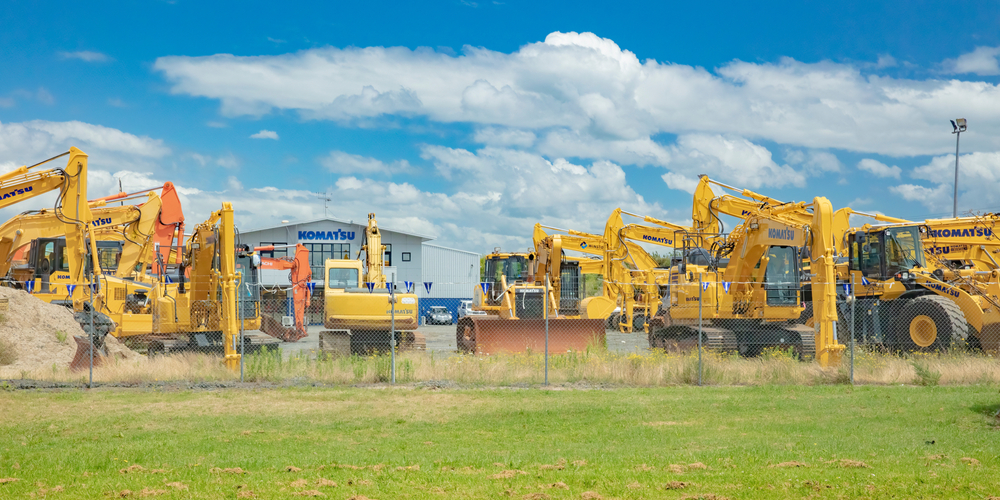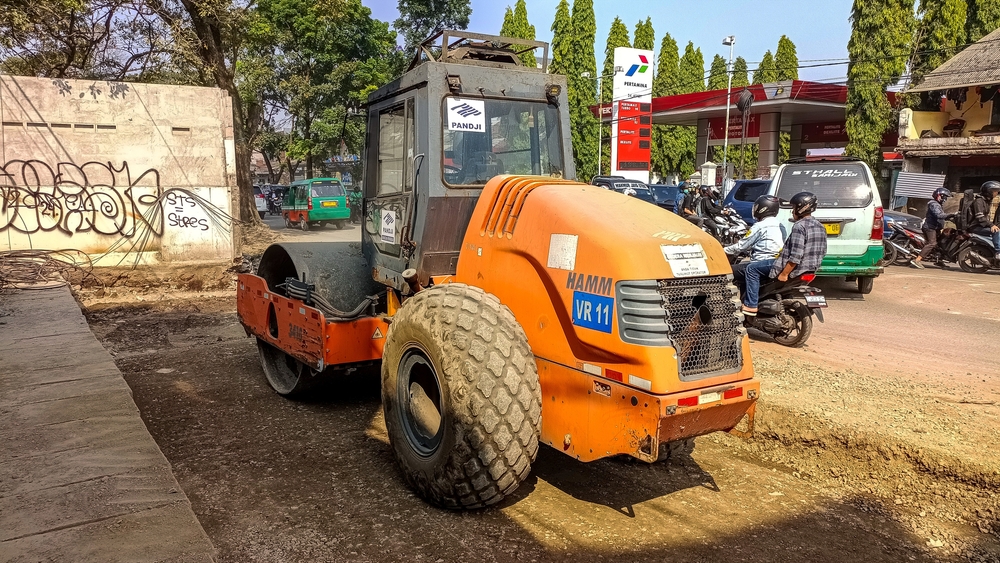Maintaining the undercarriage of your dozer is crucial for ensuring its optimal performance and extending its lifespan.
The undercarriage is one of the most critical components of a dozer, supporting its weight and providing necessary traction.
Neglecting its maintenance can lead to costly repairs and significant downtime.
Understanding the Dozer’s Undercarriage
The undercarriage of a dozer is a complex assembly that plays a crucial role in the machine’s overall functionality and efficiency. It comprises several key components, each with specific functions that support the dozer’s weight and enable it to move across various terrains.
Tracks
Tracks are the most visible and fundamental part of the undercarriage. They provide the primary contact with the ground, distributing the dozer’s weight evenly to prevent sinking and ensuring stable movement. Tracks are made of linked metal plates that form a continuous loop, allowing the dozer to navigate rough and uneven surfaces efficiently.
Rollers
Rollers are positioned between the tracks and the dozer’s frame. They support the dozer’s weight and facilitate smooth track movement. There are two types of rollers: bottom rollers, which bear the machine’s weight, and top rollers, which guide the track over the undercarriage.
Idlers
Idlers are mounted at the front and sometimes at the rear of the undercarriage. Their primary function is to guide the tracks and maintain proper tension. They help keep the tracks aligned and reduce the likelihood of derailment.
Sprockets
Sprockets are toothed wheels that drive the tracks. Located at the rear of the undercarriage, they convert the engine’s power into the movement of the tracks. Properly functioning sprockets are vital for the dozer’s mobility and efficiency.
Regular Inspection
Regular inspections are crucial for identifying wear and damage early, which can prevent minor issues from escalating into major, costly problems.
A well-structured inspection routine ensures that all components are in good working order and helps maintain the dozer’s performance and longevity. Here are some guidelines for conducting thorough inspections:
1. Track Tension
Proper track tension is essential to avoid excessive wear or slippage. Tracks that are too loose can derail, while overly tight tracks can accelerate wear on the rollers and sprockets.
2. Wear Patterns
Inspect tracks, rollers, and other components for uneven wear patterns. Uneven wear can indicate misalignment or improper tension, both of which need to be addressed promptly.
3. Damaged Components
Look for cracks, breaks, or any signs of excessive wear on tracks, rollers, idlers, and sprockets. Replace any damaged or worn parts to prevent further deterioration and potential breakdowns.
Track Tension Adjustment
Adjusting track tension is a critical maintenance task that directly impacts the performance and longevity of the tracks. Incorrect tension can lead to premature wear, increased fuel consumption, and operational inefficiencies. Follow these steps for proper track tension adjustment:
1. Park the Dozer
Ensure the dozer is on a flat, stable surface to get an accurate measurement.
2. Raise the Track
Use the dozer’s hydraulics to lift the track off the ground slightly. This allows for a clear view of the track sag.
3. Measure Sag
Measure the sag in the track at its midpoint. The ideal sag varies by model, so refer to the manufacturer’s specifications.
4. Adjust Tension
Use the adjustment mechanism, typically a grease gun or hydraulic cylinder, to tighten or loosen the track as necessary. Follow the manufacturer’s instructions to ensure proper adjustment.
5. Recheck
Lower the track and recheck the tension. Repeat the adjustment process if necessary until the correct tension is achieved.
Cleaning and Lubrication
Keeping the undercarriage clean and well-lubricated is vital for minimizing wear and preventing damage.
Dirt, mud, and debris can cause accelerated wear on moving parts, while proper lubrication reduces friction and prevents rust. Here are some recommendations for cleaning and lubrication:
Cleaning
Regularly use high-pressure water to remove dirt, mud, and debris from the undercarriage. Pay special attention to areas where dirt accumulates, such as between the track links and around the rollers and idlers. Avoid using harsh chemicals that could damage rubber components or seals.
Lubrication
Apply suitable lubricants to all moving parts, including rollers, idlers, and track links. Use lubricants recommended by the manufacturer to ensure compatibility and effectiveness.
Regular lubrication reduces friction, minimizes wear, and prevents corrosion, extending the life of the undercarriage components.
Track Replacement and Repair
Knowing when to replace or repair tracks is crucial for maintaining the dozer’s efficiency and preventing downtime. Tracks that are worn beyond repair can lead to significant performance issues and increased wear on other components. Here are some guidelines for track replacement and repair:
Wear Indicators
Most tracks have wear indicators that signal when the tracks are nearing the end of their usable life. Replace tracks when these indicators show significant wear to avoid further damage.
Repair Options
If the damage is localized, consider repairing the tracks by replacing individual links or components. For more extensive damage, full track replacement may be necessary. Always use parts that meet the manufacturer’s specifications to ensure compatibility and performance.
Undercarriage Alignment
Proper alignment of the undercarriage components is essential for smooth operation and reduced wear. Misalignment can cause uneven wear, increased fuel consumption, and potential breakdowns. Here are some tips for ensuring proper alignment:
Tracks
Regularly check that the tracks are aligned correctly with the rollers and idlers. Misaligned tracks can lead to uneven wear and increased stress on the undercarriage components.
Rollers and Idlers
Ensure that rollers and idlers are properly aligned and functioning correctly. Misalignment can cause the tracks to derail or wear unevenly, leading to further operational issues.
Preventive Maintenance Schedule
Implementing a preventive maintenance schedule is essential for avoiding unexpected breakdowns and extending the undercarriage’s lifespan.
A well-structured maintenance schedule helps identify potential issues early and ensures all components are maintained regularly. Here is a suggested schedule:
- Daily: Inspect tracks and components for visible damage or debris. Clean the undercarriage to remove any accumulated dirt and debris.
- Weekly: Check track tension, clean the undercarriage thoroughly, and lubricate all moving parts.
- Monthly: Conduct a detailed inspection of the undercarriage, including alignment checks, detailed cleaning, and lubrication of all components. Replace any worn or damaged parts.
Training and Operator Tips
Proper training for dozer operators on undercarriage maintenance best practices can significantly impact the equipment’s lifespan.
Well-trained operators can identify potential issues early and operate the dozer in a manner that minimizes wear and tear. Here are some recommendations:
Training
Provide comprehensive training on maintenance routines, including how to perform regular inspections, adjust track tension, and clean and lubricate the undercarriage. Ensure operators understand the importance of each maintenance task and how it impacts the dozer’s performance.
Operating Tips
Encourage operators to avoid excessive speeds, sharp turns, and rough terrains whenever possible, as these actions can increase undercarriage wear. Train operators to recognize early signs of wear and damage and to report any issues promptly for maintenance.
Conclusion
Maintaining your dozer’s undercarriage is essential for ensuring its performance and durability. Investing time and resources into regular undercarriage maintenance not only prolongs the life of your equipment but also enhances operational efficiency and safety.
Additionally, training operators in proper maintenance techniques fosters a culture of care and responsibility, which further contributes to the longevity and reliability of your machinery.
Prioritize undercarriage maintenance to keep your construction projects running smoothly and efficiently, ensuring that your dozer remains a valuable asset to your operations for years to come.









